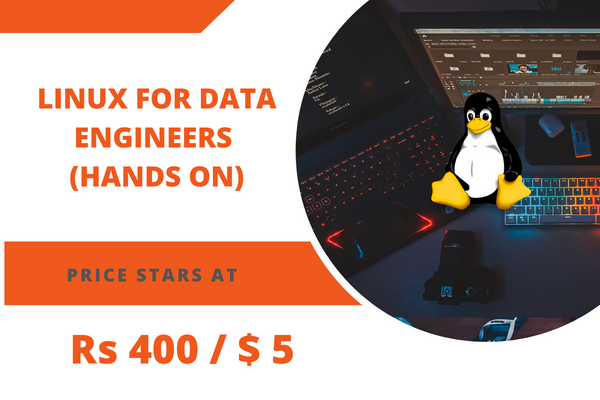There are no items in your cart
Add More
Add More
| Item Details | Price | ||
|---|---|---|---|
Learn everything about Linux for Data Engineers (Hands-On) for beginners
Language: English
Instructors: Bigdata Engineer
Why this course?
Are you a data engineer, data analyst, or big data enthusiast who wants to build a strong foundation in Linux?
If yes, then this course – Linux for Data Engineers (Hands-On) – is designed specifically for you.
Linux is the backbone of modern data engineering and big data systems. Most of the tools in the Hadoop and Spark ecosystem run on Linux-based servers. As a data engineer, being comfortable with Linux commands, file systems, permissions, and shell scripting is not optional – it’s essential.
In this course, you will go from Linux basics to advanced shell scripting, with a focus on practical, hands-on learning. You will not only learn the commands but also understand how to use them in real-world data engineering scenarios such as working with log files, automating workflows, and managing data pipelines.
By the end of the course, you will have the Linux skills every data engineer needs to succeed in real-world big data projects.
What You’ll Learn
Who is this course for?
After successful purchase, this item would be added to your courses.You can access your courses in the following ways :
